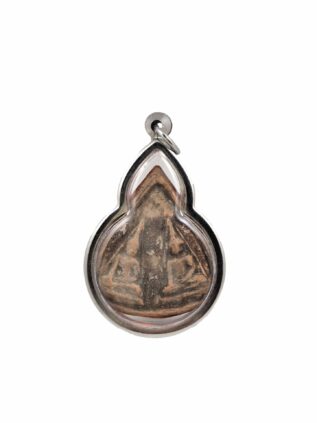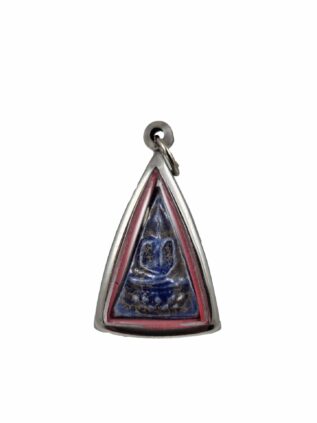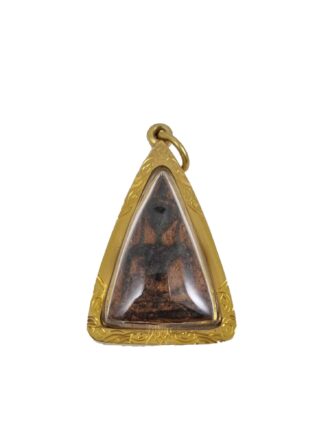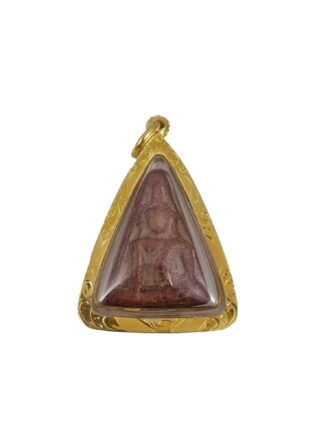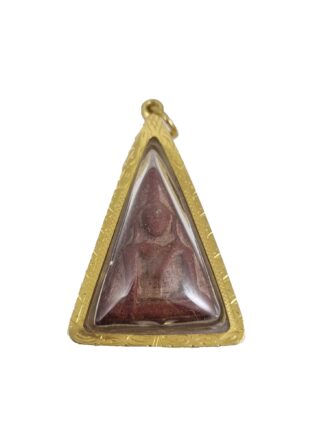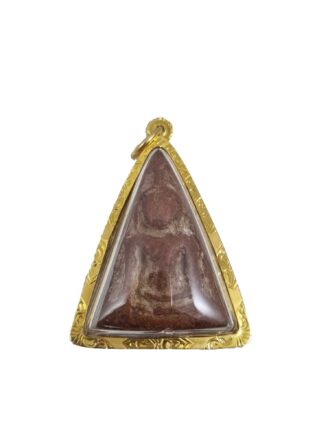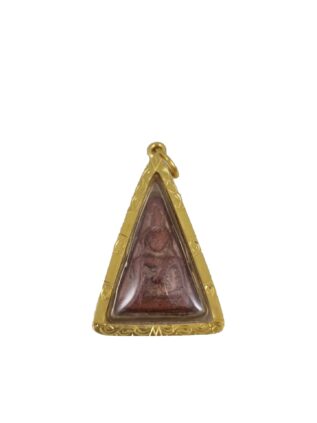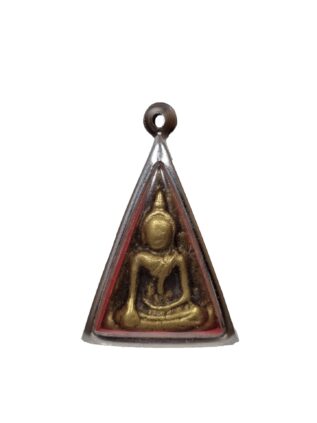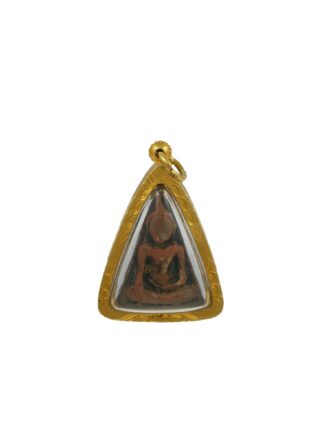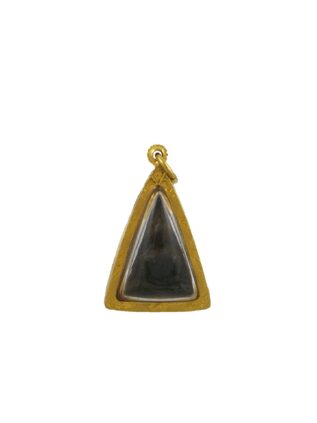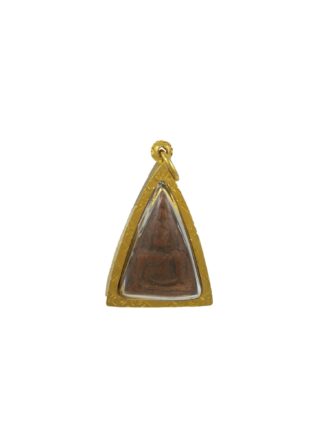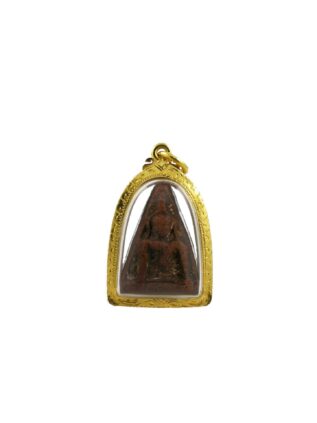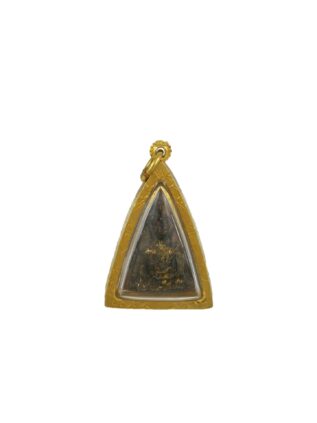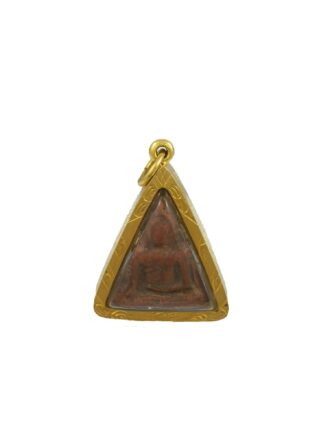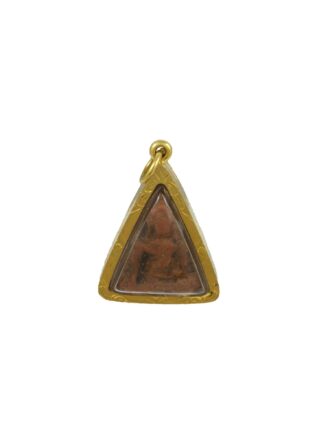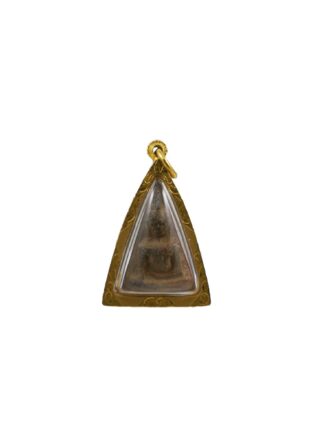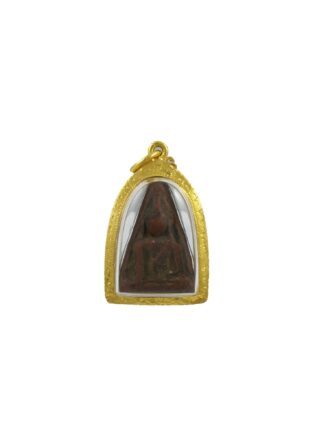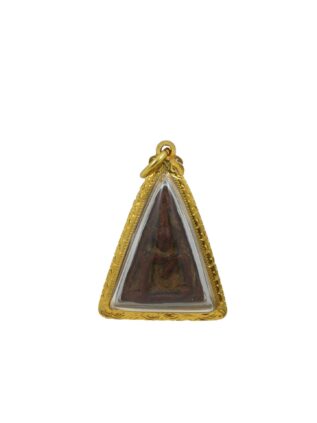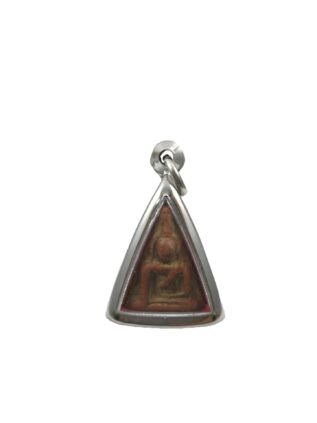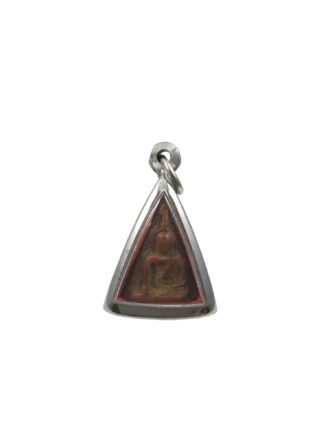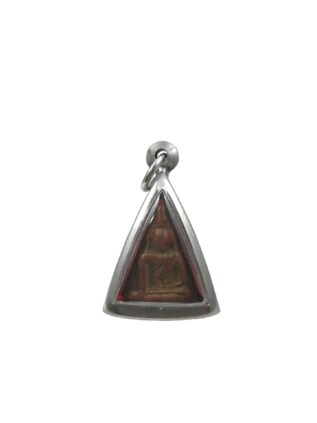Phra Nang Phaya
Known as the “Queen of amulets,” Phra Nang Phaya is a part of the Grand Benjapakee set. This triangular amulet portrays a Buddha in the subduing Mara posture (left-hand rests on the lap and palm facing up, right-hand bends over the knees and facing the ground), symbolising enlightenment and calm.
The amulet originated during the Ayutthaya era in Phitsanulok province. Queen Wisutkasat, the wife of King Mahathammarachathirat, commissioned its creation during B.E. 2106 (A.D.1563) amidst the turmoil of war. The initial batch, made during this tumultuous period, might have been crafted hastily, but its significance as one of Thailand’s most sacred amulets is undoubted. Mostly, they were given to soldiers as protective talismans during the conflict.
King Naresuan ascended the throne in B.E. 2133 (A.D.1590) after his father’s demise. Post-victory, he undertook the renovation of several temples, including Wat Nang Phaya, Wat Phra Sri Rattanamahathat, and Wat Rajburana, all constructed by his parents. The monarch also sanctioned the creation of a subsequent batch of these amulets for his troops. This second iteration was aesthetically superior to its predecessor. Any surplus was securely stored in the pagodas of the aforementioned temples. The consecration of these amulets took place in Wat Phra Sri Rattanamahathat, overseen by revered monks.
Centuries later, in B.E. 2444 (A.D.1901) during King Rama V’s reign, these treasured items were rediscovered in Wat Nang Phaya. As preparations for the monarch’s visit got underway, a cache of amulets was unearthed. The findings were subsequently presented to the King, who graciously distributed some to his officials. The remaining pieces were transported to Bangkok for safekeeping at Wat Inthrawiharn.
Today, these amulets are highly sought after by both worshipers and collectors. They are revered for blessings that encompass protection from harm, earning respect, and enhancing charisma.
Showing 1–24 of 60 resultsSorted by latest
-

Phra Nang Phaya
$147 Add to cart -

Phra Nang Phaya
$443 Add to cart -

Phra Nang Phaya
$1,109 Add to cart -

Phra Nang Phaya
$887 Add to cart -

Phra Nang Phaya
$887 Add to cart -

Phra Nang Phaya
$887 Add to cart -

Phra Nang Phaya
$1,331 Add to cart -

Phra Nang Phaya
$887 Add to cart -

Phra Nang Phaya
$591 Add to cart -

Phra Nang Phaya
$1,257 Add to cart -

Phra Nang Phaya
$1,405 Add to cart -

Phra Nang Phaya
$1,405 Add to cart -

Phra Nang Phaya
$1,405 Add to cart -

Phra Nang Phaya
$1,405 Add to cart -

Phra Nang Phaya
$1,405 Add to cart -

Phra Nang Phaya
$1,405 Add to cart -

Phra Nang Phaya
$1,405 Add to cart -

Phra Nang Phaya
$1,405 Add to cart -

Phra Nang Phaya
$1,405 Add to cart -

Phra Nang Phaya
$1,405 Add to cart -

Phra Nang Phaya
$1,405 Add to cart -

Phra Nang Phaya
$221 Add to cart -

Phra Nang Phaya
$221 Add to cart -

Phra Nang Phaya
$221 Add to cart
Showing 1–24 of 60 resultsSorted by latest

